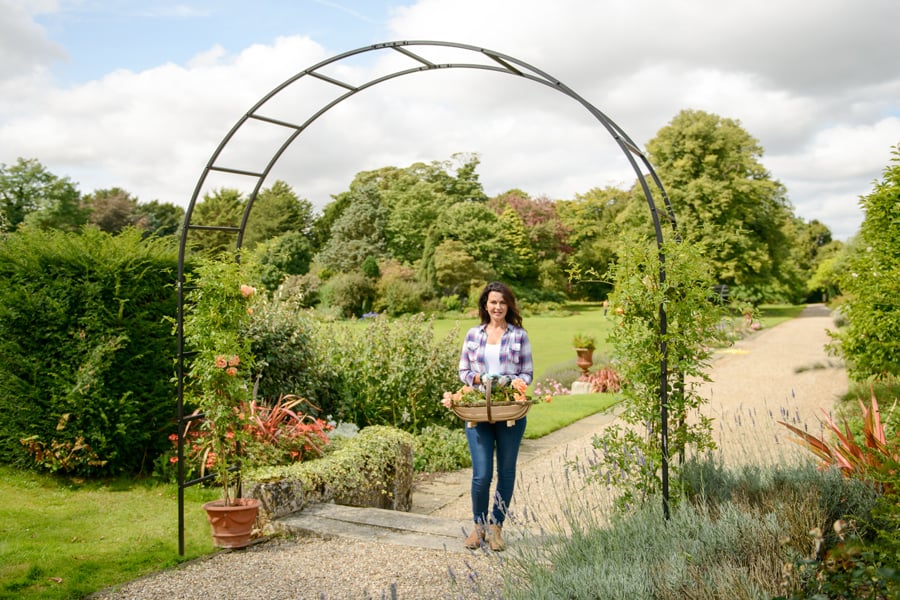Garden arches: A quick guide to structure and style in your outdoor space
Things are always greener in the outdoors, but why does it have to be flat and all at ground-level? Adding furniture, a temporary garden structure or a garden archway to your green space will add interest and give it a professional edge. So, let’s take a look at:
- How to use garden arches
- Other kinds of garden structure
Grab your gardening gloves and let’s get landscaping…
How to use garden arches
A garden arch can be a really versatile piece of standalone structure. You can use one to define a gap in your hedge, to frame one of your nicer flowers, or use several to create an intricate arched pathway. You’re only limited by your imagination (and the space available).
One of the best uses for them is as a Garden structure for climbing plants. Clematis and viney plants are particularly fond of arches they can wind around and grow up to reach the sunlight. More woody plants like wisteria with their lilac flower sprays draping overhead are a classic option too – bonus points because they smell amazing.
Other Garden arch ideas include:
- Using a wooden garden arch as a focal point to highlight an ornament
- Using a metal garden arch with a gate or a gateway arch to create a magnificent entrance to your space
- A garden arch with seating is ideal to create a cosy little calming nook for you to relax in
Just make sure you find one which is fit for purpose – there are loads of garden arches to choose from and some places, like Harrod Horticultural, even make bespoke, made-to-measure garden archways and structures.

Other kinds of garden structure
Garden structures are a great way to use the vertical space in your gardens. Growing trellis is a well-known choice to add height to fences and to give plants and flowers something to move up. Creating living walls is a space-saving way of creating vertical interest too. But there are other more free-standing options.
Garden arbour
These are enclosed archways or seats which offer some protection from the elements but the side and (typically) arched roof panels can be solid or latticework. Arbours are generally smaller for one or two people and are best-placed in corners or plant-heavy areas so you can cosily enjoy the view.
Gazebos and pergolas
These tend to act as central points for everyone to sit and enjoy the outside space. The difference is Gazebos tend to have a roof and are covered from rain, whereas a Pergola is more open-topped and open-sided.
 No matter your garden size or shape, a garden arch or other structure will change the way you enjoy it. You’ll be making the most of the vertical space and everything will feel that bit fancier too.
No matter your garden size or shape, a garden arch or other structure will change the way you enjoy it. You’ll be making the most of the vertical space and everything will feel that bit fancier too.
For your own ideal structures and all things gardening, visit Harrod Horticultural

ADVERTORIAL



















